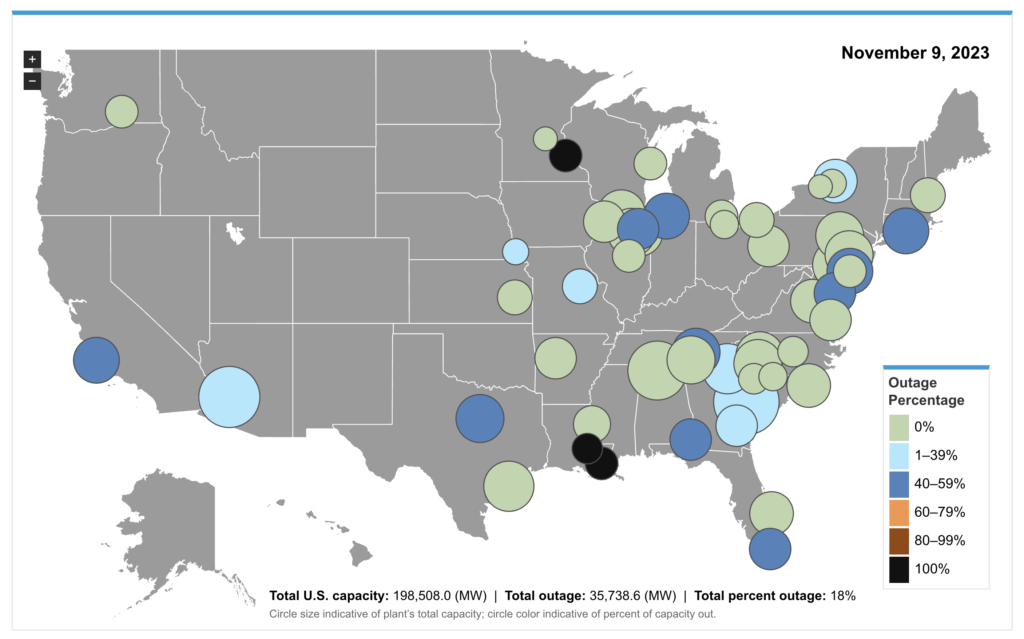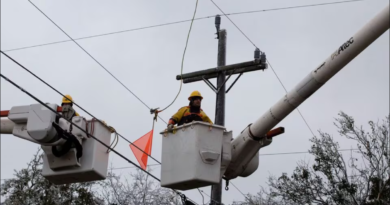U.S. Nuclear Power Outages vs. Capacity
Each morning, the Nuclear Regulatory Commission (NRC) receives updates on the operations of every nuclear electricity generator across the United States. Collating this data into the Power Reactor Status Report, we present it through interactive visualizations on our Status of Nuclear Outages page. Our analysis merges NRC’s daily updates with information from the Annual Electric Generator Report and Monthly Update to offer a comprehensive view. The page showcases two maps delineating the capacity and outage status of U.S. nuclear plants.
Typically, nuclear power reactors undergo refueling every 18 to 24 months, a process that can take as few as 10 days. However, outage periods tend to extend due to concurrent noncritical maintenance aimed at minimizing annual downtime.

Nuclear generators typically operate at or close to maximum capacity. Operators strategically schedule refueling outages during the fall and spring, known as shoulder months, capitalizing on lower electricity demand during these periods when heating and cooling needs are reduced.
Although our Status of Nuclear Outages page debuted in 2015, it encompasses NRC’s daily nuclear reactor status information dating back to January 1, 2007. While it displays outage severity, it does not detail the causes behind these outages. Additional plant status information becomes accessible from the NRC four weeks after the initial outage report.
Source – https://cleantechnica.com/




